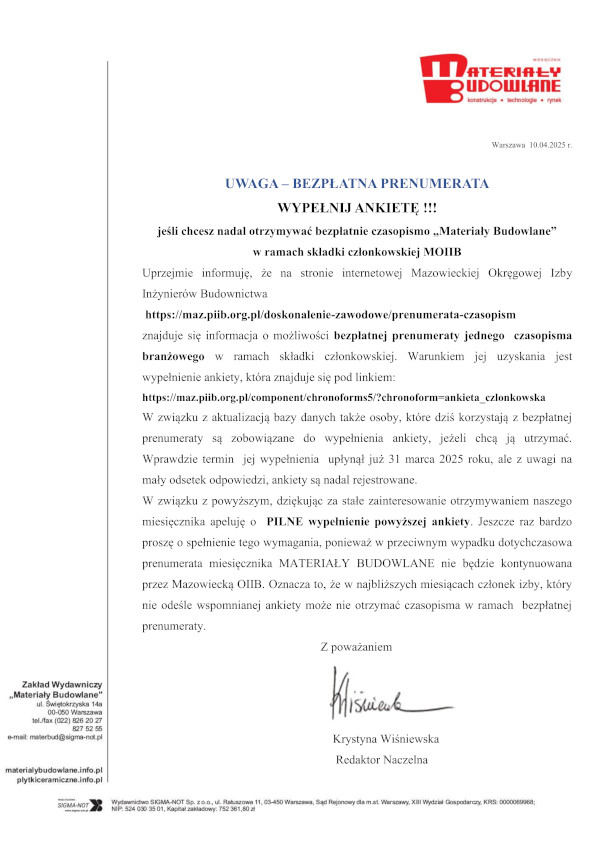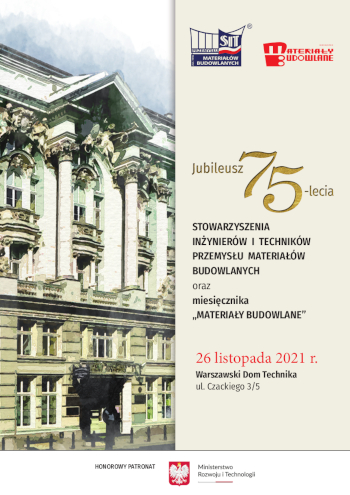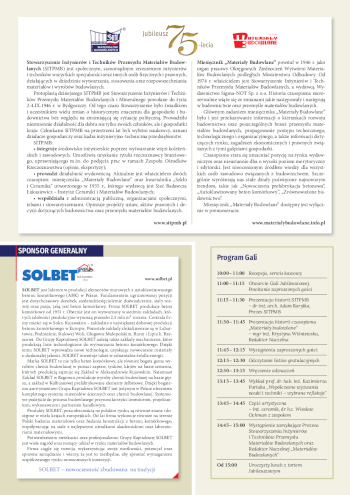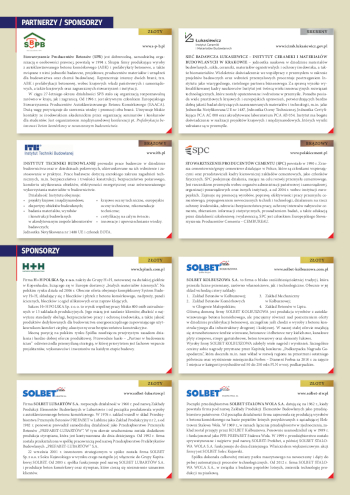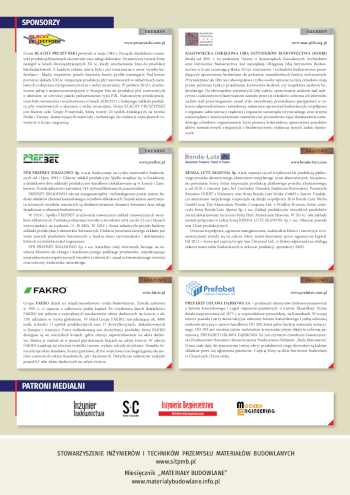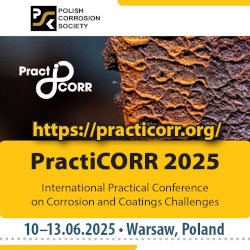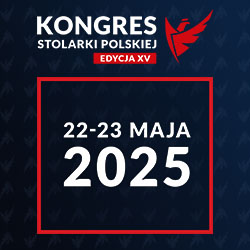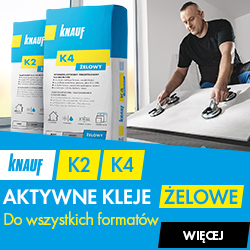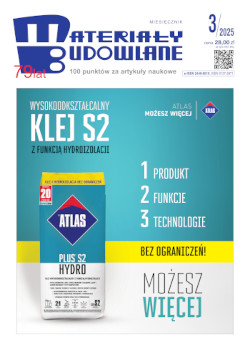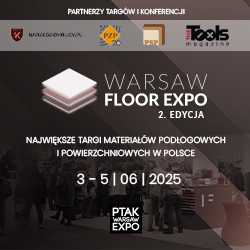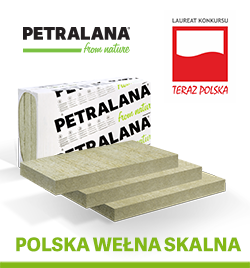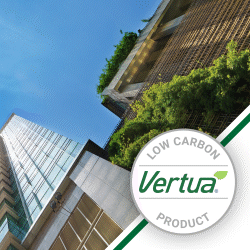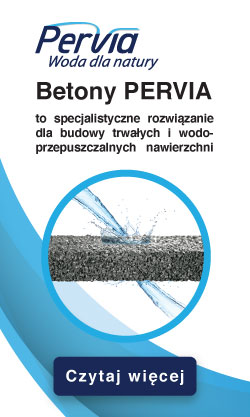Open Access (Artykuł w pliku PDF)
Basic properties of geopolymers with ceramic waste addition
Aleksandra Chuczun, Politechnika Białostocka; student
inż. Bartosz Rakowski, Politechnika Białostocka; student
mgr inż. Edyta Gosk, Politechnika Białostocka; student
dr inż. Katarzyna Kalinowska-Wichrowska, Politechnika Białostocka; Wydział Budownictwa i Nauk o Środowisku
ORCID: 0000-0003-1760-3943
Adres do korespondencji: Ten adres pocztowy jest chroniony przed spamowaniem. Aby go zobaczyć, konieczne jest włączenie w przeglądarce obsługi JavaScript.
DOI: 10.15199/33.2022.08.14
Studium przypadku
Streszczenie. W artykule przedstawiono podstawowe właściwości geopolimerów z dodatkiem miału ceramicznego, tj.: wytrzymałość na zginanie i ściskanie, nasiąkliwość wagową, gęstość objętościową. Wykonano analizę SEM kompozytów i badania chemiczne surowców. Przyjęto stałą zawartość dodatku odpadowego, zmienną temperaturę wygrzewania i zawartość aktywatora. Wyniki wskazują na korzystny wpływ dodatku miału ceramicznego na badane cechy kompozytów.
Słowa kluczowe: geopolimery; odpad ceramiczny; recykling; temperatura dojrzewania.
Abstract. The article presents the basic properties of geopolymers with the use of ceramic fines, i.e. flexural and compressive strength, water absorption, bulk density. SEM analysis of composites and chemical tests of research raw materials were performed.Aconstant content of waste additive, a variable curing temperature and activator content were assumed. The results show a beneficial effect of the addition of ceramic fines on the examined properties of the composites.
Keywords: geopolymers; ceramic waste; recycling; curing temperature.
Literatura
[1] PriyaA.AReview on Eco-Green Geopolymer Concrete. International Journal of Science and Research (IJSR). 201: 1167 – 1170.
[2] Kalinowska-Wichrowska K. The Use Of FineWasteMaterial For The Future Of Sustainable Construction, Tech. Sci. 2018; 21: 149–156.
[3] Jin R, Chen Q. Investigation of concrete recycling in the U. S. construction industry, Proc. Eng. 2015; 118: 894-901.
[4] Duxson P, Fernández-Jiménez A, Provis JL, Lukey GC, PalomoA, Van Deventer JSJ. Geopolymer technology: The current state of the art, J. Mater. Sci. 2007; 42: 2917–2933.
[5] Siemieniuk J, Szatyłowicz E. Zmniejszenie emisji CO2 w procesie produkcyjnym cementu, Civil and Environmental Engineering 2018; s. 81 – 87.
[6] Pawluczuk E, Kalinowska-Wichrowska K, Soomro M. Alkali-Activated Mortars with Recycled Fines and Hemp as a Sand, Materials. 2021; https://DOI: 10.3390/ma14164580.
[7] Pawluczuk E, Kalinowska-Wichrowska K, Romero-Jimenez JR, Fernandez-Rodríguez JM, Suescum-Morales D. Geopolymer concrete with treated recycled aggregates: Macro and microstructural behavior. Journal of Build. Eng. 2021; https://doi.org/10.1016/j.jobe.2021.103317.
[8] Detphan S, Chindaprasirt P. Preparation of fly ash and rice husk ash geopolymer. International Journal of Minerals, Metallurgy and Materials. 2009; 16: pp. 720 – 726.
[9] Sama TA, DimaMK,Amr SE-D, Samir IA.-E. Properties of CeramicWaste Powder-Based Geopolymer Concrete, International Congress on Polymers in Concrete (ICPIC 2018); https://doi. org/10.1007/978-3-319-78175-4_54.
[10] Luhar I, Salmabanu L,MohdA, NabiałekM, Sandu AV, Szmidla J, Jurczyńska A, Razak AR, Aziz I, Jamil NH, Deraman ML. Assessment of the Suitability of Ceramic Waste in Geopolymer Composites:AnAppraisal.Materials; https://doi. org/10.3390/ma14123279.
[11] PN-EN 196-1:2016-07 Metody badania cementu – Część 1: Oznaczanie wytrzymałości.
[12] PN-EN 12390-7:2019-08 Badania betonu – Część 7: Gęstość betonu.
[13] PN-88/B-06250:1988 Beton zwykły – Część 5: Beton 5.2 Nasiąkliwość betonu.
[14] Huseien GF, Ismail M, Tahir MM, Mirza J, Khalid NHA, Asaad MA, Husein AA, Sarbini NN. Synergism be-tween palm oil fuel ash and slag: Production of environmental-friendly alkali activated mortars with enhanced properties. Constr. Build. Mater. 2018; 170: pp. 235 – 244.
[15] Aziz IH,AbdullahMMAB, Yong HC,Ming LY, Panias D, Sakkas K. Correlation of the Processing Parameters in the Formation of Granulated Ground Blast Furnace Slag Geopolymer. In IOP Conference Series: Materials Science and Engineering, Proceedings of the International Conference on Innovative Research – ICIR Euroinvent. Romania. 2017; 209: pp. 209.
Przyjęto do druku: 20.07.2022 r.
Materiały Budowlane 08/2022, strona 80-83 (spis treści >>)


